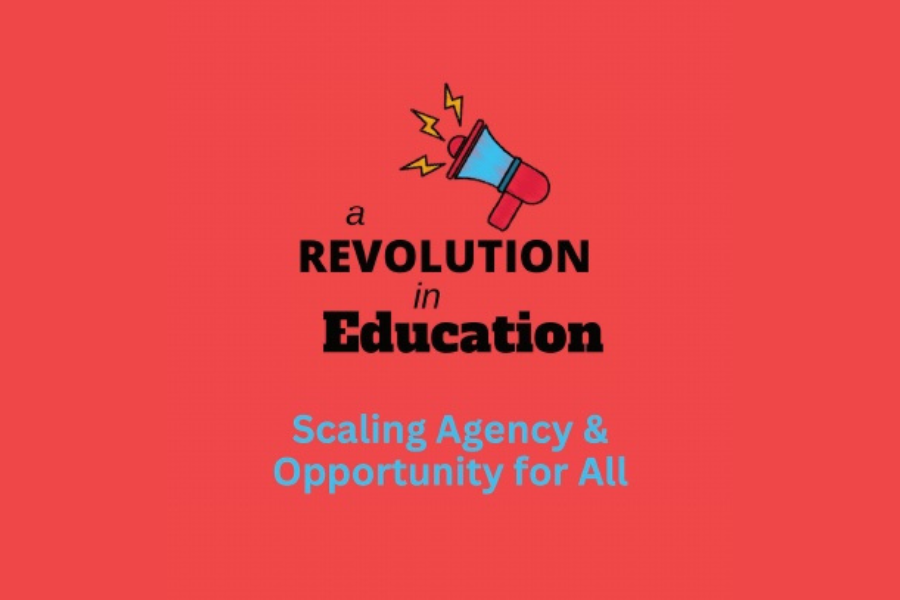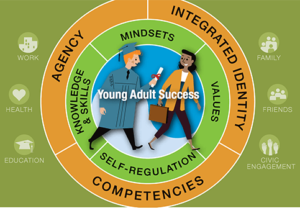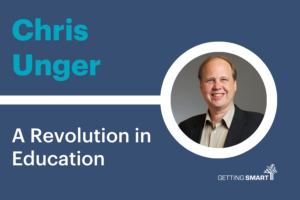Viva la Revolución
Key Points
-
After recognizing that the current design of school was not working, Chris Unger began his quest to seek out new school designs that far better serve youth and their future.
-
Read about his new book, A Revolution in Education.

By: Chris Unger
I’ve been in education for over 35 years now. I have almost seen it all having worked in over 100 districts, 500 schools, and with over 1,000 educators and ten state departments of education. I’ve been in Seattle, Hartford and Waterbury, Yonkers, New York City, Worcester and Fall River, etc., as well as state education departments up and down the Eastern seaboard. From this work, I have seen how the mindsets, expectations, paradigms and federal and state policies have handcuffed the opportunity to serve our youth better than we do now.
Recognizing that the current design of school – in how we divide the disciplines, cover content, and push students through an assembly line of class after class in groups of 20-30 – was not working, I began my quest to seek out new school designs that far better serve youth and their future. The first “aha” I had was in coming across the Big Picture schools, then just getting underway out of Providence RI. To think that this school design was not organized to shepherd youth through a game-board of compliance (think chutes and ladders) but with a focus on the interests of students and the opportunity for them to explore their interests through internships and projects blew my mind.
I left Seattle after three years to work at Brown University where from I worked with school districts throughout New England and beyond to assist them in the creation of smaller learning communities, only to find that most of these systems really only wanted the money and didn’t want to really change how they did school very much. Yes, some of them created SLCs and career academies, but these shifts were minor in relationship to what was truly needed to serve youth better. Then I ended up working with several state departments of education with colleagues on how they could better assist and support school and district improvement in their respective states. Unfortunately, the bottom line – as a result of NCLB and later the misguided federal Turnaround School efforts of the Obama administration – was raising the ELA and math proficiency levels in their lowest-performing schools.
Seeing that the current policy environment did little to truly incentivize and support the growth of innovative, learner-centered schools, and now grounded in the power of experiential learning – a focus of Northeastern University where I have been teaching since 2009 – I sought out to find other schools pushing the envelope in the design of school, designs that foregrounded student agency, relationships, and the possibilities of their future lives. While working in Seattle, I came to know Jon Ketler and his colleagues and how they created their SOTA, SAMI, and IDEA schools, which have been highlighted here and here in Getting Smart. One Stone, a tuition free private school in Boise ID, directed by students. The well-regarded High Tech High in San Diego. The quickly growing and awesome CAPS Network. The innovative Design 39. And Iowa BIG, amongst many others.
The problem as I see it and as I attempt to detail in A Revolution in Education, is that each of these endeavors were the result of creative educators who through serendipity were able to manifest their visions from idea to reality. These educators by way of serendipitous events, relationships, and access to resources were able to materialize their visions with the support of others and a fortuitous context that supported their taking root. This is incredible and wonderful, but this means that an educator with a vision has to have the courage, commitment, and savvy and be afforded a similar alignment of stakeholder interest and welcoming context to get their vision off the ground. But our current public school ecosystem – with its current policies and funding streams – is very much designed to support the current status quo and hence very good at sustaining school as we now know it.
It continues to be increasingly clear that our current designs and aims of schooling are doing a gross disservice to our youth, their families, our communities, and the world. Student apathy remains high. Outcomes remain low – for most. It is for all these reasons that I push for a revolution today. Our youth remain disengaged and are graduating without the skills desired by employers. And perhaps most important, students continue to vocalize the lack of personal relevance and development of agency and opportunity they want, left abysmally unsure of what they want to do upon graduating and how they can pursue a desired future.
To school and district leaders, classroom educators, policy actors, parents, and community members, the future of education is yours to pursue.
Chris Unger
While the stories of High Tech High, the Tacoma Schools, Iowa BIG, and numerous others in the book can inspire us to rethink what school could be, these origin stories foreground how the start-up of such schools relied on the courage, persistence, creativity, and serendipitous events, relationships, community advocacy, and resources that led to their taking root and growing over time. Educators should not have to hope for or fight for the same fortuitous circumstances as afforded the other schools named in this book. Our public school system should be proactively incentivizing and supporting district and school leaders, classroom educators, and community partners to break the mold and build new designs of learning that serve their youth better. When educators are empowered and supported in pursuing creative visions, transformative school models can grow.
So, the call to action is clear: To school and district leaders, classroom educators, policy actors, parents, and community members, the future of education is yours to pursue. We can use many of the stories presented in the book and as evident elsewhere to help us pursue new designs. The revolution has been and continues to be underway here and there, but we need it to grow everywhere. Not slowly, and in only some communities. Rather, we need the number to grow exponentially, and in all communities. To do this, district and state policy actors need to be brave and figure out ways to incentivize and support the significant growth of agency-oriented schools. We can’t keep hoping that a few will break the mold despite the circumstances. We need the system to actively incentivize and support the development and growth of new designs. Then we need school and district leaders to embrace the challenge, community members to advocate for the new designs, and then district and state policy actors to create the greenfield for such schools to take root and grow. Fast.
How many more generations of students should we lose to apathy, compliance, and the lack of skills and knowledge that can benefit them moving forward in their lives? How much longer can we wait not taking advantage of the creativity of our educators and the possibilities of what we can do for our youth, our communities, and the world? Let’s stop tinkering inside the current model – something our current schools are very good at – and re-vision the aims of our schools and how we can achieve those ends – toward agency and opportunity for all.
Learn more about A Revolution in Education: Scaling Agency and Opportunity for All.
Chris Unger is a Teaching Professor in the Graduate School of Education at Northeastern University and supports the Graduate School of Education’s Network for Experiential Teaching and Learning (NExT) with a number of his colleagues at the University.







0 Comments
Leave a Comment
Your email address will not be published. All fields are required.